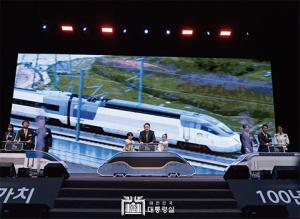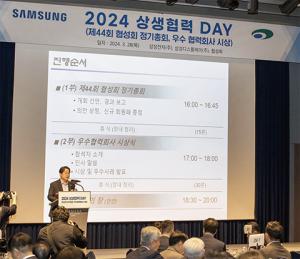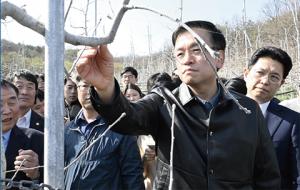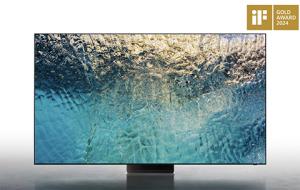 |
||
| ▲ Totem pole and seogak artist Shim Jeong-bo | ||
Totem pole
Beauty is at the eyes of beholder. Totem pole and seogak artist Shim Jeong-bo found his beauty in life at carving wood. As the time lapses and his skill and passion deepen, the beauty has become a trace of his life. Korean totem poles, in particular, are precious for Shim for they have stood eternity no matter how hash tempestuous storms whirling around them. Standing in front of these totem poles, one might image the roughness of our life by appreciating the carver’s passion and technique.
Heading to Chiak Mountain in Wonju City, we have to follow up the meandering paths for a while to reach Shim’s studio. The first to greet us are totem poles somewhat rough as if they are protecting their owner from intruders. Stepping into the studio, we might wonder whether we are in a museum for there are objects that seem to be beyond time and space.
Totem poles are monumental carvings, consisting of poles, posts or pillars, carved with symbols or figures. They are different in forms, size and colors but same in its function of preventing bad luck from entering a village.
“There is a cliff where I grew up. I didn’t dare to climb. But one day when I was in my 20s I saw a couple of totem poles standing on the cliff. So I climbed up to have a better look and they were standing there firmly much weathered and worn out. One might just pass them without noticing what they were because the figures were almost ambiguous. Then this thought struck me hard that they had been still standing there for a long time no matter rain, snow, storm and scorching heat. They were just beautiful and I felt overwhelmed” remembers Shim.
Ever since he found the beauty of totem poles, he launched a journey to find master totem pole carvers nationwide day and night. He learned the skills and the art of carving for many years. When he thought he was ready, he started to make his presence by displaying his works at various competitions. Winning a prize at the 2001 Wonju Chiak Mountain Totem Pole Competition, he carried on his prize-sweeping to the Grand Art Festival, the Donga International Art Festival, and more. In 2008, he obtained patents for his pole design, and in 2009 for totem pole design, which led him to list his name in the hall of traditional totem pole masters.
In order to make a totem pole, he climbs mountains 100 meters above sea level to pick the very best trees possible. The more curved and deformed the better the trees for totem poles. Shim turns what all sees as ugly into what all sees as beautiful. One noticeable characteristic of Shim’s totem poles is that they have scary face like many others yet the expression has warmth. They do not have regular forms but irregular yet harmoniously done.
Seogak
Seogak is not different from making totem poles in terms of carving the objects. The difference, however, is that the former carves letters and images onto the wood board. Shim has been researching and developing our traditional seogak methods and is the one who founded the Gwangwon Traditional Culture Research Center, and who has been fostering talented young seogak artists for many years. One of this achievements worth mentioning is his development of ‘nakgwan structure’ that carves letters more three dimensional; Shim has finished ‘Utility Model Registration’ for the method.
“Seogak is like a total art in which a lot of different skills should harmoniously be executed. It is such a charm that a seogak artist turns the two dimensional surface into a three dimensional form through various carving techniques. What is most important, however, is that the carving must express the vitality of the wood since the material is not an artificial substance. One good way to do this is to keep the streaks of the wood.”
Shim obtained a wood craft instructor certificate in 2009 and worked as a seogak lecturer at Korea University. He has held more than 50 times of invitational and solo exhibitions and won the best prize at the 2010 Donga International Art Festival and an excellent instructor’s prize at the 2013 Gonga International Art Festival.
Recently, he organized a large scale exhibition for talented young seogak artists as the chairman of the organizing committee. The exhibition was designed to promote exchanges and networks between seogak artists.
 |
||
신태섭 기자 tss79@naver.com








